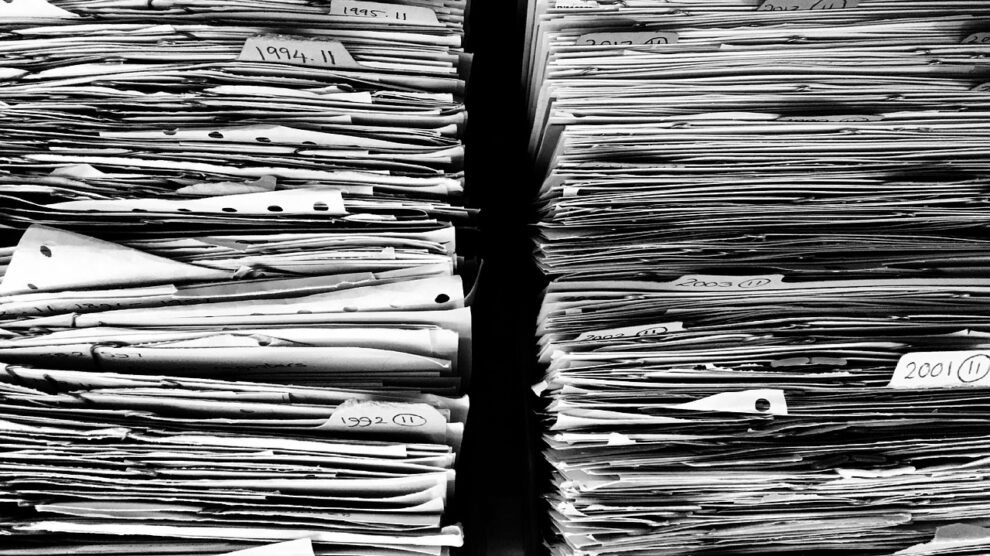Most businesses across the globe have been digitizing their documents for some time now. It’s a great way to reduce the amount of paper they use in their day to day business practices. However, the process of digitizing a large number of documents can be tricky to complete without proper strategic planning.
Businesses of all sizes have been digitizing documents to reap benefits such as reduced operational costs, improved efficiency in completing business tasks, ensured availability for important business documents, and to gain the ability to effectively communicate across multiple channels.
What do you need for digitizing documents?
The digitizing process is used to archive images of documents in a manner where they can be stored and accessed easily. Digitizing typically requires the use of the following technologies:
- Scanners
- Capture Software
- Document Management Software
Scanners
Scanners are the primary input devices for converting paper documents to digital ones. Most businesses own some type of scanner, such as the ones found in multi-functional printers in office spaces. Other dedicated scanners tend to come in low-volume and high-volume varieties.
The kind of scanner an office requires depends on:
- The volume of documents that need to be scanned
- The quality requirements for the digitized file
- The speed with which they need to be digitized
Capture Software
Capture software is used to retrieve images from the scanner and process them for saving. A good capture software should contain features such as quality assurance checks, barcode reading, optical character recognition (OCR) processing, and automatic and interactive indexing of scanned documents.
Enterprise Content Management
Enterprise content management systems can work together with capture software to retrieve, organize, and manage images for use with more complex applications.
Digitization process
The digitization process typically includes the following stages:
- Document preparation
- Scanning and capture
- Image clean up and processing
- Optical character recognition and indexing
- Transfer to a content management system or archive
Document Preparation
The first step is to organize your paper documents and ensure they’re arranged in the correct order. Check to see if any of your pages are of different sizes, or are joined by staples or paper clips. It’s important to keep your pages in order as any mistakes might carry over to the content management system or archive.
Scanning and capture
Place your documents face down on the scanner bed, close the lid and use the scan function on the scanner itself, or from the capture software. Some printers and scanners feature automatic document feeders (ADF) that scan your documents in bulk when you place a stack of them in the feeder. These are far more efficient than the traditional manual scanners.
Image clean up and processing
After the scanner has captured an image of your document, your capture software will perform processes such as de-skewing and de-speckling to improve the legibility and appearance of the digitized document
Optical Character Recognition and Indexing
Your capture software then uses optical character recognition to read what information each document contains. You can then look over the quality of your digitized document before indexing the file and transferring it to your content management system.
Transfer to a content management system
The content management system manages the files and electronically delivers them to other file systems and archives in an organized manner.
Strategies for digitizing documents in-bulk
As mentioned earlier, some scanners are far more efficient than others. However, there are still ways to strategically scan documents in order to make the best use of your time.
In many cases it may not be possible to scan all of your documents due to time constraints. In such situations you will need to prioritize the digitization of certain documents over others.
For example, frequently accessed documents should be scanned first due to their higher need. Less frequently accessed documents may not need to be scanned immediately, and could be left alone until they are requested.
High volume scanners
If you’ve been tasked with scanning multiple pages, it may be more cost effective to use a high volume document scanner with an automatic document feeder (ADF). Document digitization by hand can be a lengthy process, and one that is susceptible to human error.
Businesses can save on labour costs by using high volume scanners to digitize their documents. However, these scanners tend to be expensive, and may not be suitable for all businesses.
The camera and lens on high-volume scanners also require regular maintenance, and the lamps on these scanners need to be replaced frequently. These upkeep requirements make high-volume scanners even more costly to own.
Document digitization services
If your business is unable to afford a high volume scanner for digitizing documents in bulk, you should go to a third party company that offers document digitization services.
Most of these companies use high volume scanners, and can digitize documents in a short amount of time. This could be the best option for businesses who perform digitization so infrequently that it doesn’t warrant purchasing a high volume scanner.
Companies that offer document digitization services are often more experienced with digitization than ordinary office employees. As a result, they’re able to scan documents in bulk with greater accuracy than office employees who perform the task less frequently.
They are also better at resolving any scanning issues that could occur during the digitization process.
What strategy is best for you?
If your business requires the frequent digitization of text documents (such as legal or accounting documents) in bulk, you may want to invest in a high-volume scanner.
However, you should keep in mind that these high volume scanners may not be able to handle documents beyond a certain size, and are poorly suited for scanning photographic images.
If your business infrequently digitizes a small number of documents, you should purchase a low-volume scanner. They are easy to use and most office employees should be able to operate one.
In situations where you need to scan a large number of documents infrequently, you should use the services of third party document digitization service.





